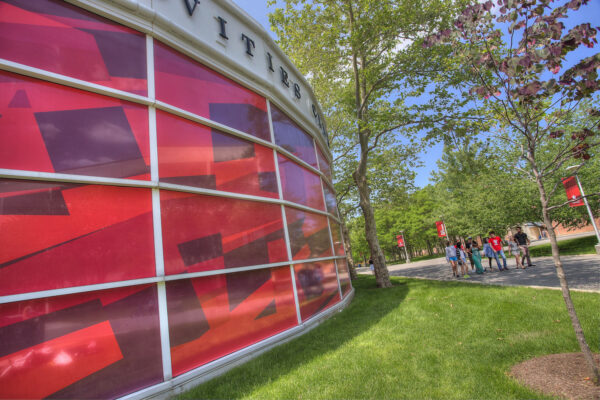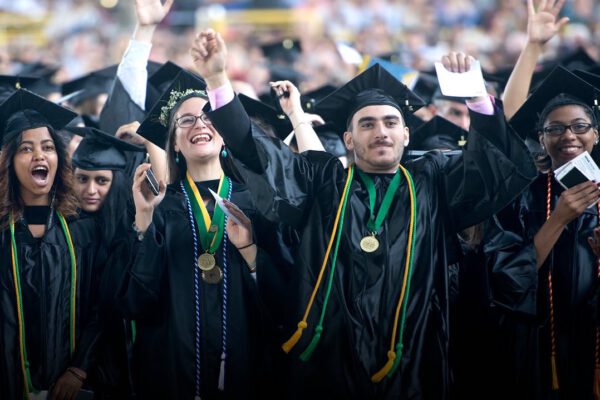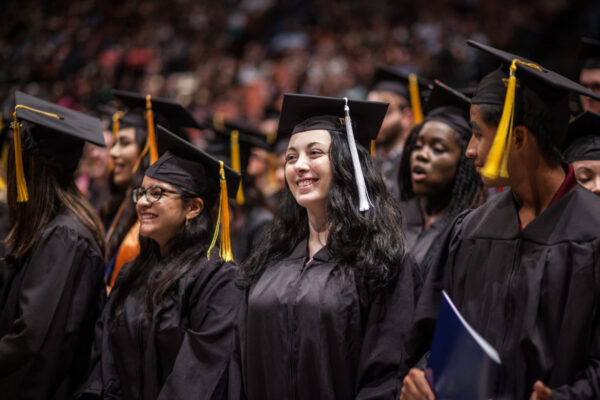What Does the Higher Education Community Mean for the Black Lives Matter Movement?
The sociocultural lines drawn between college and university campuses, the communities within which they reside, and society at large are never brightly drawn. This is most certainly true for the national conversation taking shape on what it means to be Black, brown and poor in America (as well as what it means to be Muslim, gay, an immigrant . . . the list goes on).
 Panelists on the ACE2016 session on the Black Lives Matter movement—William B. Harvey (North Carolina Agricultural and Technical State University) Cheryl D. Dozier (Savannah State University), Tuajuanda Jordan (St. Mary’s College of Maryland) and Kenneth P. Monteiro (San Francisco State University)—also blurred these lines and did so with deep honesty and purpose. They articulated well what higher education means for the movement and what the movement means for higher education.
Panelists on the ACE2016 session on the Black Lives Matter movement—William B. Harvey (North Carolina Agricultural and Technical State University) Cheryl D. Dozier (Savannah State University), Tuajuanda Jordan (St. Mary’s College of Maryland) and Kenneth P. Monteiro (San Francisco State University)—also blurred these lines and did so with deep honesty and purpose. They articulated well what higher education means for the movement and what the movement means for higher education.
A frustration felt by the speakers, indeed one felt within many communities of color, is what feels like a lack of progress in educational attainment and other life outcomes. Dozier asked, “Why are we still discussing this 40 years later?” All agreed that without deep, structural change, progress will always be wanting. If such change is to be met on college campuses—as so poignantly articulated by the panel—it requires:
- Curriculum change. As Dozier pointed out, if we aren’t having dialogue across the curriculum, if it doesn’t address the histories and lived experiences of all, we will continue to be plagued with an environment that doesn’t value diverse perspectives.
- A move away from the margins. Panelists pointed to the typical portrayal of underrepresentation as isolated and group-specific, when in fact the injustices faced by one group ultimately affect the whole of the community.
- Looking in the mirror. These are difficult times, with many acknowledging the Black Lives Matter movement and related protests as the culmination of years of unrest and tension, including on college campuses. Monteiro posed a powerful question for the higher education community: Are we an oppressor, or are we a liberator?
- Strategic action. Meaningful efforts to support diversity and inclusion (they are different) require a campus-wide strategic plan that embeds these concepts throughout, not a stand-alone “diversity” section.
Everyone, including the audience through their questions and comments, reinforced the powerful role of college and university leadership as necessary to legitimizing the concerns raised by BLM and others, and to set a tone and create space for change.
Speaking from experience, Jordan noted that “you don’t need an army, you need a catalyst.” As discussed in an earlier session on supporting minority male students, those catalysts also need support lest they become isolated and unable to spur needed change.
Change is hard. It’s uncomfortable at times—perhaps most of the time. Yet as Monteiro observed, “a safe space is not necessarily a comfortable space.”
If you have any questions or comments about this blog post, please contact us.


